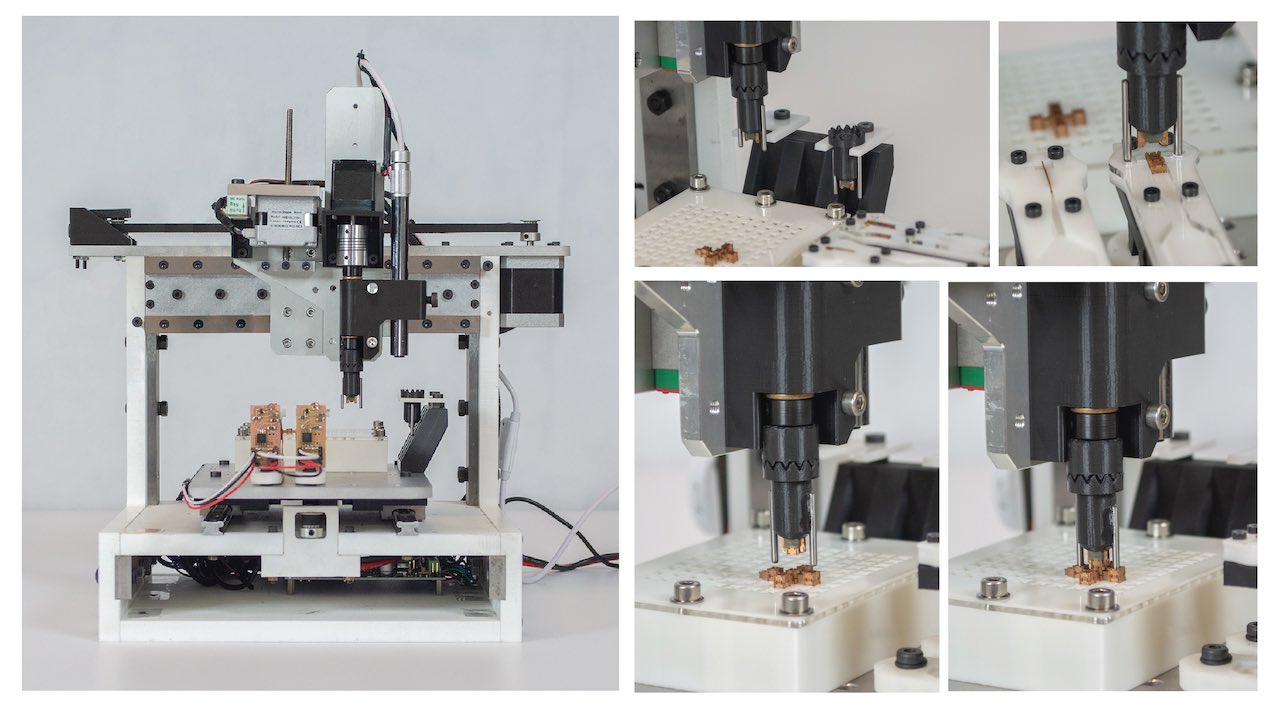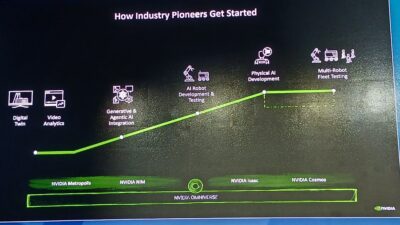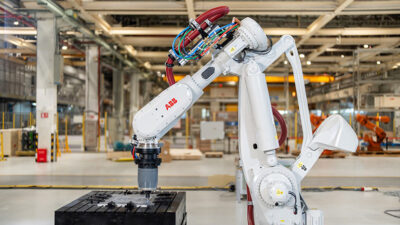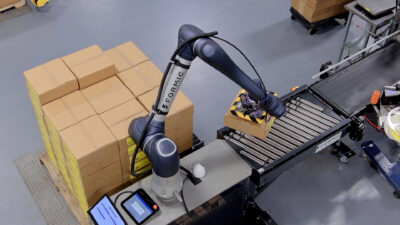MIT researchers have developed a mobile motor that could allow future robots to assemble complex structures — including other robots.

MIT Professor Neil Gershenfeld, struck by the fact that all the world’s living things are built out of combinations of just 20 amino acids, wondered if it was possible to create a kit of 20 fundamental parts that could be used to assemble all of the different technological products in the world?
Gershenfeld and his students have been making steady progress in that direction ever since. Their latest development consists of a set of five tiny fundamental parts that can be assembled into a wide variety of functional devices, including a tiny “walking” motor that can move back and forth across a surface or turn the gears of a machine.
Previously, Gershenfeld and his students showed that structures assembled from many small, identical subunits can have numerous mechanical properties. Next, they demonstrated that a combination of rigid and flexible part types can be used to create morphing airplane wings, a longstanding goal in aerospace engineering. Their latest work adds components for movement and logic, and will be presented at the International Conference on Manipulation, Automation and Robotics at Small Scales (MARSS) in Helsinki, Finland, in a paper by Gershenfeld and MIT graduate student Will Langford.
Their work offers an alternative to today’s approaches to constructing robots, which largely fall into one of two types: custom machines that work well but are relatively expensive and inflexible, and reconfigurable ones that sacrifice performance for versatility. In the approach, Langford came up with a set of five millimeter-scale components, all of which can be attached to each other by a standard connector. These parts include the previous rigid and flexible types, along with electromagnetic parts, a coil, and a magnet. In the future, the team plans to make these out of still smaller basic part types.
MIT graduate student Will Langford developed a machine that’s like a cross between a 3-D printer and the pick-and-place machines that manufacture electronic circuits, but that can produce complete robotic systems directly from digital designs. Courtesy: Will Langford, MIT[/caption]
“One emerging application is to make tiny robots that can work in confined spaces,” Gershenfeld said. Some of the devices assembled in this project, for example, are smaller than a penny yet can carry out useful tasks.
To build in the “brains,” Langford has added part types that contain millimeter-sized integrated circuits, along with a few other part types to take care of connecting electrical signals in three dimensions.
The simplicity and regularity of these structures makes it relatively easy for their assembly to be automated. To do that, Langford has developed a novel machine that’s like a cross between a 3-D printer and the pick-and-place machines that manufacture electronic circuits, but unlike either of those, this one can produce complete robotic systems directly from digital designs. Gershenfeld said this machine is a first step toward to the project’s ultimate goal of “making an assembler that can assemble itself out of the parts that it’s assembling.”
Massachusetts Institute of Technology (MIT)
Music tech | MIT – Massachusetts Institute of Technology
– Edited by Chris Vavra, production editor, Control Engineering, CFE Media, [email protected]. See more Control Engineering robotics stories.



